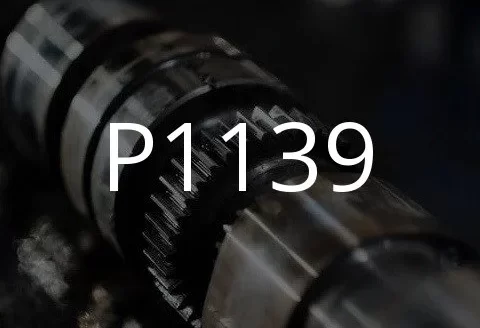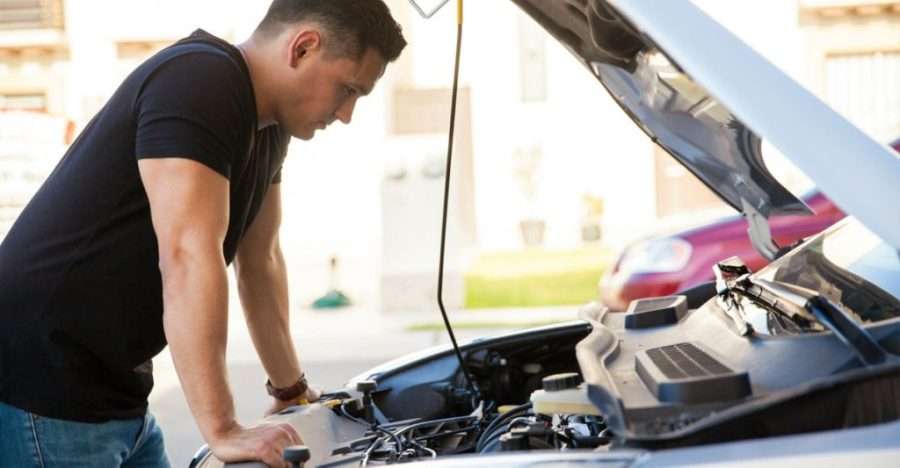
P1139 (Volkswagen, Audi, Skoda, Seat) Long-term fuel control system, idle, bank 2, mixture too rich
Content
P1139 – OBD-II Trouble Code Technical Description
Trouble code P1139 indicates that the fuel-air mixture is too rich (at idle) in engine block 2 in Volkswagen, Audi, Skoda, Seat vehicles.
What does the fault code mean P1139?
Trouble code P1139 indicates that the system is idling with too much fuel relative to air, resulting in a rich air/fuel mixture. A rich mixture can be caused by a variety of reasons, including faulty sensors, mass air flow sensors, or problems with the fuel injection system. This malfunction may result in poor engine performance, loss of power and increased emissions of harmful substances.

Possible reasons
The reasons for the P1139 trouble code may include the following:
- Oxygen Sensor (HO2S) Failure: The oxygen sensor may be dirty or faulty, causing the exhaust gas oxygen content to be incorrectly measured.
- Mass Air Flow (MAF) Sensor Problems: If the MAF sensor is faulty or dirty, it can cause the amount of air coming in to be miscalculated, which in turn can affect the fuel/air mixture.
- Fuel injection system problems: Problems with the fuel injection system, such as clogged injectors, malfunctioning fuel pressure regulator, or fuel leaks, can cause excessive fuel consumption and a rich mixture.
- Incorrect fuel pressure: Low fuel pressure can result in improper fuel atomization in the cylinders, which can also cause a rich mixture.
- Electrical Connection Problems: Poor connections or opens in the electrical circuits associated with the oxygen sensor or mass airflow sensor can result in incorrect signals and therefore a trouble code.
It is important to note that these reasons can only be suggestions, and for an accurate diagnosis it is necessary to conduct a more detailed examination of the system in accordance with the repair manual for the specific vehicle model.
What are the symptoms of a fault code? P1139?
Possible symptoms for DTC P1139:
- Increased fuel consumption: Since the P1139 code indicates that the air/fuel mixture is too rich, one of the main symptoms may be increased fuel consumption. This occurs due to an incorrect fuel to air ratio which results in excessive fuel consumption.
- Unstable engine operation: A faulty air/fuel mixture can cause the engine to run rough at idle or at low speeds. This may manifest itself as shaking, rattling, or rough running of the engine.
- Increased emissions: Due to excess fuel in the mixture, there may be an increase in emissions of harmful substances such as nitrogen oxides and hydrocarbons.
- Decreased performance: A rich air/fuel mixture can cause the engine to lose power and reduce overall performance.
- Increased black smoke emissions: If the mixture is too rich, black smoke may form when the fuel burns, especially noticeable when accelerating or idling.
If you notice any of these symptoms, it is recommended that you contact a qualified auto mechanic to diagnose and repair the problem.
How to diagnose a fault code P1139?
When diagnosing DTC P1139, the following steps are recommended:
- Checking the sensors: Check the operation of the oxygen (O2) sensors using a diagnostic scanner. Make sure that the sensors are functioning correctly and providing correct data on the composition of the exhaust gases.
- Checking the fuel system: Check fuel pressure and distribution. Check the operation of the fuel injectors for proper delivery and atomization of fuel into the cylinders.
- Airflow check: Check that the air filter is not clogged and that the mass air flow (MAF) sensor is functioning correctly.
- Checking for vacuum leaks: Check for leaks in the vacuum system that could affect the fuel to air ratio.
- Checking the throttle valve: Make sure the throttle valve is operating properly and is not causing air flow restrictions.
- Checking the ignition system: Check the condition of the spark plugs and wires. Incorrect ignition can also affect the air/fuel mixture.
- Checking the crankcase ventilation system: Check the condition of the crankcase ventilation system for leaks or blockages, as this can also affect the mixture.
After completing these diagnostic steps, you can identify the cause and resolve the problem that is causing the P1139 code. If you do not have experience in diagnosing vehicles, it is recommended that you contact a professional mechanic for further investigations and repairs.
Diagnostic errors
When diagnosing DTC P1139, the following errors may occur:
- Unambiguous interpretation of the code: Sometimes mechanics may focus only on the meaning of the P1139 code without considering other factors that may affect the air-fuel mixture. This may cause you to miss other potential causes, such as problems with the fuel system or oxygen sensors.
- Incorrect diagnosis of oxygen sensors: Sometimes mechanics may misinterpret the data received from oxygen sensors and consider them to be faulty when the problem may lie elsewhere, such as in the fuel system.
- Skip other systems: Some mechanics may skip checking other systems, such as the vacuum system or throttle body, which can also affect the air-fuel mixture.
- Incorrect interpretation of scanner data: Incorrect interpretation of data obtained using a diagnostic scanner can also lead to incorrect diagnosis and repair.
- Ignoring mechanical problems: Some mechanics may focus solely on the engine's electronic components, ignoring mechanical problems such as intake or exhaust system leaks, which can also affect the fuel-air mixture.
Correct diagnosis of code P1139 requires an integrated approach and careful analysis of all possible factors affecting the composition of the fuel-air mixture.
How serious is the fault code? P1139?
Trouble code P1139, indicating the engine's air/fuel mixture is too rich at idle, can be serious, especially if the problem persists. A mixture containing too much fuel can lead to a number of problems:
- Increased fuel consumption: Excessive amount of fuel in the mixture can lead to increased fuel consumption.
- Reduced engine efficiency: If the mixture is too rich, the engine may operate less efficiently, resulting in loss of power and rough operation.
- Ecological problems: Excessive amounts of fuel in exhaust gases can have a negative impact on the environment, increasing emissions of harmful substances.
- Catalyst damage: If the problem persists, excess fuel may cause the catalyst to overheat and become damaged.
Overall, although the P1139 code may not pose any immediate danger to the driver, it requires careful attention and repair to prevent more serious problems and keep the engine running properly.
What repair will help eliminate the code? P1139?
To resolve the P1139 code, you must perform the following steps:
- Checking the sensors: Check the oxygen (O2) and mass air flow (MAF) sensors for malfunctions. If the sensors do not work correctly, replace them.
- Checking fuel pressure: Check the fuel pressure in the injection system. If the pressure is below the standard value, it may result in a too rich mixture. Make sure the fuel pump and filter are working properly.
- Checking the injection system: Check the condition of the injectors and the pressure in the injection system. Replace faulty injectors and correct any leaks in the injection system.
- Checking the air filter: Replace a dirty or clogged air filter, which may result in insufficient air in the mixture.
- Checking the intake system: Check the condition of the intake system for leaks or damage that could result in an incorrect fuel/air mixture.
- Software update: Sometimes an engine software update can solve an over-rich problem.
After completing these steps, conduct thorough diagnostics and testing to ensure that the problem is resolved and error code P1139 no longer appears.

